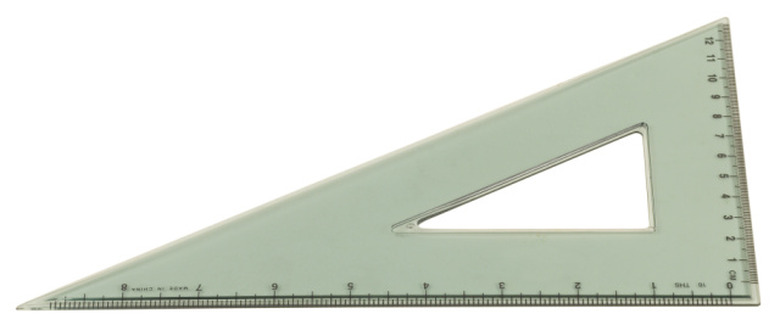How To Calculate Angle Size
Angle size calculation refers to the use of geometrical laws and invariants to find out how many degrees an angle is. Therefore, it is different from angle size measurement, which includes the use of a protractor or other tools to come up with the result. Calculating an angle's size demands knowledge of complementary, supplementary and adjacent angles, as well as the properties of geometric shapes.
Step 1
Subtract the given supplementary angle (its value in degrees) from 180 to calculate the size of the angle in question. Supplementary angles, or straight angles, are those whose sum adds up to 180 degrees.
Step 2
Repeat the process, this time subtracting the given angle from 90, to calculate the size of an unknown complementary angle. Complementary angles, or right angles, are those summing up to 90 degrees.
Step 3
Subtract the two given angles of a triangle from 180 to calculate the unknown one. This is based on the geometric law that the sum of the triangle's interior angles can be no more and no less than 180. Likewise, when you only have one unknown angle on a quadrilateral, subtract the given angles from 360; on a pentagon this figure rises to 540; and on a hexagon to 720.
Step 4
Divide the internal angles sum of regular polygons by the number of their angles to calculate individual angles' size. Regular polygons are those featuring same-size sides and — subsequently — same-size angles.
Step 5
Use the Pythagorean theorem to find out a side's length and afterwards calculate its opposite angle (since angles are proportionate to the sides' length). According to the theorem, the square of side opposite to the right angle (hypotenuse) equals the sum of the squares of the other two sides (c^2 = a^2 + b^2). For instance, if you find that the new side is 4 cm while the other one is 2 cm, then its angle will be 60 degrees, twice the other side's 30 degrees.
TL;DR (Too Long; Didn't Read)
These calculations apply when you are given additional information (shape sides' length and size of other angles). Otherwise, you need a protractor to find out the size of a random angle.
Cite This Article
MLA
Vossos, Tasos. "How To Calculate Angle Size" sciencing.com, https://www.sciencing.com/calculate-angle-size-8497231/. 24 April 2017.
APA
Vossos, Tasos. (2017, April 24). How To Calculate Angle Size. sciencing.com. Retrieved from https://www.sciencing.com/calculate-angle-size-8497231/
Chicago
Vossos, Tasos. How To Calculate Angle Size last modified March 24, 2022. https://www.sciencing.com/calculate-angle-size-8497231/
